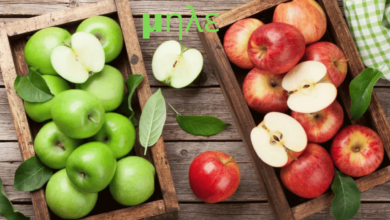Çeciir: A Symbol of Turkish Hospitality and Culture

Çeciir is more than just a dish in Turkey; it is a cultural emblem that encapsulates the country’s rich culinary traditions and historical heritage. This versatile dish, primarily made from chickpeas (garbanzo beans), has been a staple in Turkish households for centuries. This article explores the beginnings, preparation, variations, and cultural significance of çeciir, as well as its nutritional benefits and role in modern cuisine.
The Origins of Çeciir
The history of çeciir is deeply intertwined with the agricultural and culinary traditions of Turkey. Chickpeas, the primary ingredient, have been cultivated in the region for thousands of years. Ancient civilizations, including the Ottomans, valued chickpeas for their versatility and nutritional benefits. The word “çeciir” itself reflects the simplicity and humility of this cherished legume, which has nourished generations.
Traditional Preparation of Çeciir
The preparation of çeciir is a labour of love that begins with soaking dried chickpeas all night. The purpose of this step is to soften the chickpeas and reduce cooking time. Once washed, the chickpeas are drained and simmered with finely chopped onions, minced garlic, tomato paste, olive oil, and a choice of broth—vegetable or chicken. Spices such as cumin, red pepper flakes, oregano, and bay leaves are used to improve the taste profile. The mixture is cooked on low heat until it thickens into a rich, fragrant stew, perfect for serving with rice or bread.
Ingredients:
- Dried chickpeas
- Onions
- Garlic
- Tomato paste
- Olive oil
- Vegetable or chicken broth
- Spices: cumin, red pepper flakes, oregano, bay leaves
Instructions:
- Soak the chickpeas overnight.
- Drain and simmer with onions, garlic, tomato paste, olive oil, and broth.
- Season with spices.
- Cook until thick and flavorful.
- Serve warm with rice or bread, garnished with parsley, lemon juice, and paprika.
Regional Variations of Çeciir
One of the fascinating aspects of çeciir is its adaptability. Each region in Turkey has its unique twist on this traditional dish. In the Black Sea region, it is expected to find çeciir variations that include corn kernels or local herbs like dill and parsley. The central Anatolian region often serves çeciir with hearty meat dishes or rich stews, creating a comforting and satisfying meal. Along the Mediterranean coast, fresh seafood or citrus flavours are added, reflecting the coastal influences.
These geographical differences not only demonstrate the diversity of Turkish cuisine but also demonstrate the creativity of Turkish cooks who adapt çeciir to local ingredients and tastes. Whether enjoyed as a stew, a soup, or even a crispy pancake, çeciir remains a beloved dish across Turkey.
The Cultural Significance of Çeciir
Food is more than just food in Turkish culture sustenance; it is a means of connecting with one’s heritage and community. Çeciir embodies this connection, bringing families together around the dining table. The act of preparing and sharing çeciir fosters a sense of unity and belonging, transcending generations. Each family may have its unique recipe for çeciir, passed down through the ages, preserving culinary traditions and family bonds.
Moreover, çeciir is a symbol of Turkish hospitality. In many households, guests are welcomed with a meal featuring çeciir, reflecting the warmth and generosity of Turkish culture. This dish is not only a testament to the culinary skills of Turkish cooks but also a representation of the cultural values that prioritize community and togetherness .
Nutritional Benefits of Çeciir
Beyond its cultural significance, çeciir is celebrated for its nutritional benefits. Chickpeas are a powerhouse of nutrients, providing high levels of protein, minerals, fibre, and vitamins. They are exceptionally high in potassium, magnesium, iron, folate, and other nutrients that support general health and well-being.
Chickpeas’ high fibre content facilitates digestion and helps control blood sugar levels; therefore = çeciir is a suitable dish for those managing diabetes or seeking to maintain a healthy weight. Additionally, the antioxidants in chickpeas can reduce inflammation and promote heart health, further enhancing the nutritional profile of this humble legume.
Çeciir in Modern Cuisine
In recent years, çeciir has found its way into various contemporary culinary applications, both within Turkey and internationally. It is a flexible component that has a distinct flavour and texture and functions well in a range of dishes. For example, ground chickpeas are used to make gluten-free flours, which can be added to baked goods for a nutty flavour. Çeciir can also be roasted for a crispy snack, blended into smoothies for added protein, or utilized in vegetarian and vegan recipes in place of meat.
The rise of plant-based diets has further boosted the popularity of çeciir. As a high-protein, low-fat ingredient, it serves as a fantastic substitute for dairy and meat, appealing to health-conscious consumers and those seeking sustainable food options. Chefs around the world are experimenting with çeciir, creating innovative recipes that pay homage to its traditional roots while exploring new culinary horizons.
Sustainable Farming and Çeciir
The cultivation of chickpeas for çeciir also supports sustainable farming practices in Turkey. Many small-scale farmers in regions like the Black Sea have embraced traditional farming methods, growing chickpeas without harmful pesticides or synthetic fertilizers. This not only preserves the agricultural heritage of these regions but also ensures the production of high-quality, flavorful ingredients for çeciir and other traditional dishes .
By celebrating and consuming çeciir, people are also contributing to the sustainability of local farming communities and promoting environmentally friendly food systems. This connection between food, culture, and sustainability highlights the broader impact of çeciir beyond its immediate culinary appeal.
Experiencing Çeciir: From Street Stalls to Family Gatherings
To truly appreciate çeciir, one must experience it in various settings across Turkey. In bustling cities like Istanbul, street vendors prepare and sell çeciir, filling the air with the enticing aroma of cornmeal and butter. These street stalls are often gathering spots for locals, offering a quick and delicious snack while fostering a sense of community.
However, the true essence of çeciir is best experienced in the warmth of a Turkish household. Family gatherings, whether for special occasions or everyday meals, revolve around the preparation and sharing of çeciir. This cherished ritual not only preserves culinary traditions but also strengthens family bonds as stories and recipes are passed down through generations.
Conclusion: Embracing the Legacy of Çeciir
Çeciir is more than just a dish; it is a culinary expression of Turkey’s rich cultural legacy and evidence of the creativity and resilience of its people. From its modest origins as a staple meal to its elevated status in modern cuisine, çeciir has withstood the test of time, continuing to nourish and delight those who partake in its flavours.
Read More: Orangîa: A Comprehensive Guide to Understanding and Utilizing This Unique Concept





Hello there! I simply wish to give you a huge thumbs up for your excellent info you have got right here on this post. I am returning to your website for more soon.|